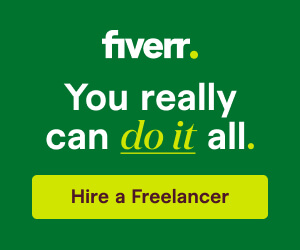The traditional playbook for building a company—hire employees, lease office space, and scale headcount—no longer makes sense for many modern businesses. A new generation of entrepreneurs is proving that you can build seven- and eight-figure companies without a single full-time employee. This isn’t just about freelancers and solopreneurs; it’s a fundamental shift in how businesses are structured, leveraging automation, strategic partnerships, and fractional talent to achieve what once required an entire staff.
The foundation of an employee-less business lies in ruthless simplification. Instead of offering dozens of products or services, successful no-employee businesses focus on one core offering that can be delivered exceptionally well. A marketing consultant might specialize only in LinkedIn lead generation for SaaS companies rather than being a full-service agency. A software developer could create a single Shopify app solving a specific inventory problem rather than building custom solutions for every client. This focus reduces complexity, making it possible to manage operations without a team.
Automation handles what would traditionally be employee roles. Tools like Zapier and Make (formerly Integromat) connect disparate systems, automatically handling tasks from invoice generation to customer onboarding. A health coach might use Calendly for scheduling, Stripe for payments, and a pre-recorded video course for initial consultations—eliminating the need for an admin assistant. The key is identifying repetitive tasks that eat time but don’t require human judgment, then systematically removing yourself from those processes.
Fractional talent replaces full-time hires for specialized needs. Platforms like Upwork and Toptal provide access to top-tier professionals who work on-demand. A six-figure e-commerce store might use a fractional CFO for two hours per month to review finances, a freelance photographer for quarterly product shoots, and a contract developer for website tweaks—paying only for exactly what’s needed. The breakthrough comes when you realize most roles don’t require 40 hours per week of attention, just strategic bursts of expertise.
Client self-service is the secret weapon of employee-less businesses. Instead of personally handling every customer inquiry, successful entrepreneurs build systems where clients help themselves. This could mean a comprehensive FAQ section with video walkthroughs, an interactive pricing calculator, or a chatbot that handles 80% of common questions. A bookkeeping service might provide clients with a standardized Google Sheet template and instructional videos, drastically reducing one-on-one training time. The more you can productize your service, the less human intervention required.
Strategic partnerships create leverage without payroll. Rather than hiring a sales team, a web designer might partner with complementary businesses—SEO agencies or branding consultants—who refer clients for a commission. A business coach could collaborate with software companies to offer bundled services. These partnerships extend your capabilities without adding fixed costs, and because partners are invested in mutual success, they often deliver better results than employees with no skin in the game.
Asynchronous communication makes location and time zones irrelevant. Employee-less businesses default to written communication via tools like Slack or Twist, reserving meetings only for complex discussions. This not only increases productivity (many report getting a week’s work done in three days) but allows tapping global talent without the headache of synchronizing schedules. A content agency might have writers in Manila, editors in Lisbon, and clients in New York—all collaborating seamlessly without real-time interaction.
The financial structure of no-employee businesses gives them unusual resilience. Without fixed payroll costs, they can adjust expenses rapidly during downturns. When the pandemic hit, traditional businesses struggled with layoffs and office leases, while agile operator businesses simply paused contractor relationships and shifted focus. This flexibility also allows testing new revenue streams with minimal risk—you can pilot a new service using freelance specialists rather than betting on full-time hires.
Scaling without employees requires different metrics. Instead of tracking headcount growth, successful operator businesses measure:
- Automation coverage: What percentage of repetitive tasks are systemized?
- Contractor utilization: Are fractional experts being used at optimal capacity?
- Client self-service rate: How many customer interactions happen without you?
- Revenue per process: How much income does each automated workflow generate?
These KPIs reveal opportunities to increase leverage—perhaps by adding another chatbot flow or bringing on a specialized contractor for a recurring task.
The psychological shift is just as important as the operational one. Building without employees means embracing the “CEO as chief architect” role—designing systems rather than doing work. Many entrepreneurs struggle with this transition, clinging to hands-on work they should automate or outsource. The breakthrough comes when you realize your highest value is creating the machine, not being a cog in it.
Some of the most successful employee-less businesses use a “hub and spoke” model. The founder (hub) maintains core intellectual property and strategy, while contractors (spokes) handle execution. A law firm might have one attorney overseeing cases while freelance paralegals and researchers do the legwork. A software company could keep product vision in-house while contracting development. This maintains control without the burden of employment.
The future belongs to these agile, asset-light businesses. As remote work becomes standard and AI handles increasingly complex tasks, the competitive advantage shifts to those who can leverage resources without owning them. The playbook is being rewritten—not by corporate giants, but by solo founders running million-dollar businesses from laptops, proving that sometimes the best team is no team at all.
What begins as necessity—not being able to afford employees—often becomes strategy. Many founders discover that staying small lets them move faster, adapt quicker, and keep more revenue. The businesses that will thrive in the coming decade aren’t those with the most staff, but those that use technology and creativity to deliver maximum value with minimum overhead. After all, in an era where one person with the right systems can outperform a twenty-person operation, why would you build any other way?







